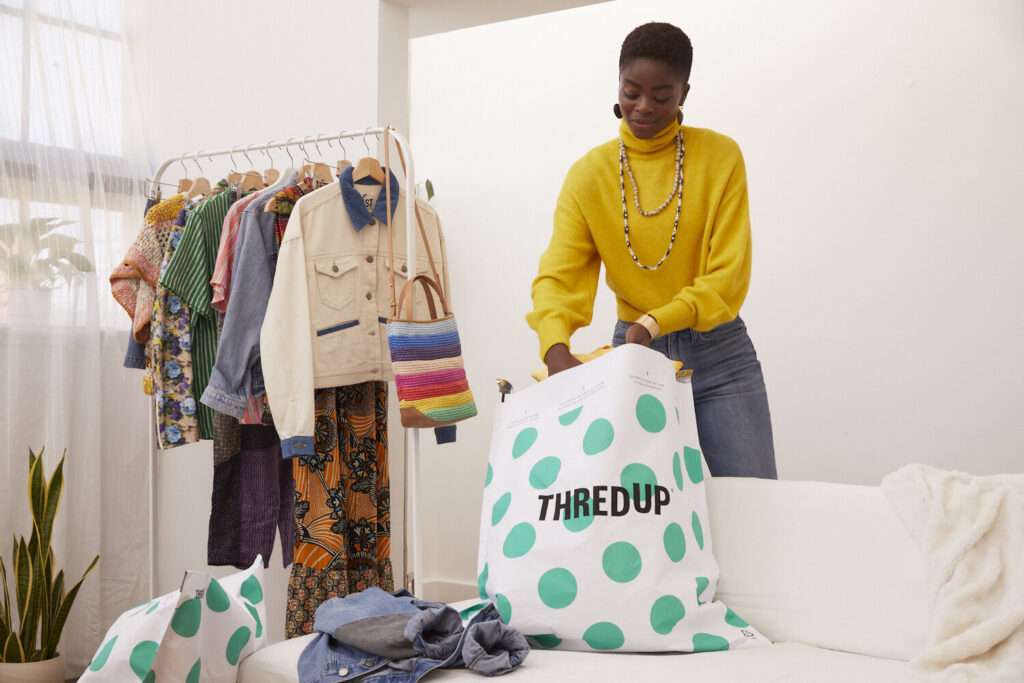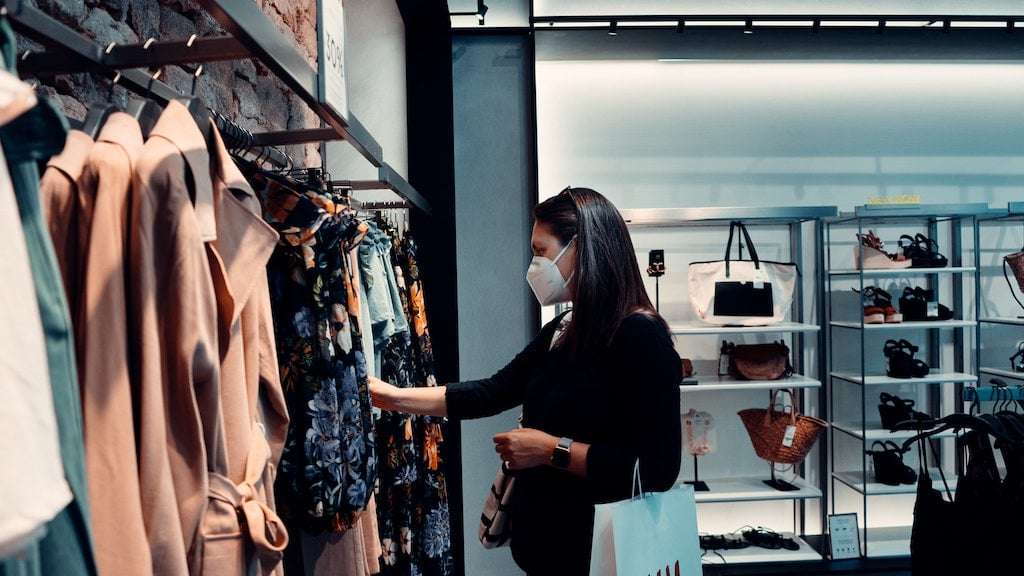ThredUp launches a Fashion Footprint Calculator as the U.S. secondhand market is expected to reach $70 billion by 2027, according to its 2023 Resale Report.
Secondhand clothing, shoes, and accessories have seen impressive growth in the U.S., with the industry expected to reach $70 billion by 2027, according to the new 2023 Resale Report from leading online resale platform ThredUp.
The report, conducted by GlobalData, a third-party retail analytics firm, provides a comprehensive measure of the secondhand market both globally and in the U.S., with forward-looking projections through 2032.
‘We’re on a promising trajectory’
“Now in its 11th year, the Resale Report has some of the most inspiring findings since we started the report in 2013,” James Reinhart, ThredUp’s CEO, said in a statement.
“Resale is starting to blossom globally, with many of the largest retailers in the world adopting more circular business models; value continues to be a key driver that motivates consumers to think secondhand first; and at the same time, global climate issues have increased awareness of resale’s potential to reduce fashion’s impact on the environment. It’s clear we’re on a promising trajectory, and by working together through collective action, we have the power to alter fashion’s future for the better,” Reinhart says.

The 2023 Resale Report found that secondhand clothing continues to take hold globally, with the global secondhand market set to almost double by 2027, reaching $350 billion. Online resale is the fastest-growing sector of the U.S. secondhand market, with expectations of growing 21 percent annually on average over the next five years, reaching $38 billion by 2027.
The report also highlighted that U.S. consumers continue to embrace secondhand clothing amid economic uncertainty and persistent inflation, with value being the number one driver influencing purchasing decisions.
In 2022, 52 percent of consumers shopped secondhand apparel, and one in three apparel items bought in the last 12 months was secondhand. Additionally, 37 percent of consumers spent a higher proportion of their apparel budget on secondhand last year. Of those, 63 percent increased their spending in response to inflation.
Consumers are still motivated by value
The top spend motivator for consumers was value, while trends were the weakest motivator. The report also found that shopping secondhand has a positive environmental impact and that it has the potential to cut new clothing production.
According to Green Story Inc., buying and wearing secondhand clothing instead of new reduces carbon emissions by an average of 25 percent. U.S. consumers bought 1.4 billion secondhand apparel items in 2022 that they normally would have bought new, up 40 percent from 2021. More than one-third of retailers say if resale proved to be successful, they would cut production of new products.

In addition to the rise in secondhand clothing sales, retailers are also adopting resale at an accelerated rate. In 2022, 88 brands launched dedicated resale programs, representing a 244 percent increase from 2021.
Retailers with branded resale programs also skyrocketed in 2022. According to the report, 86 percent of retail executives say their customers are already participating in resale, up 8 points from 2021. The report also found that 82 percent of Gen Z consumers have considered the resale value of apparel before buying it, and 64 percent of Gen Z look for an item secondhand before buying it new.
Retailers view resale as a strategic business initiative that generates positive ROI and satisfies investor demands around environmental, social, and governance (ESG) factors.
The report found that 58 percent of retail executives say offering resale options to customers is becoming table stakes, up 6 points from 2021, and 82 percent of retailers who offer resale expect it to generate a positive ROI. Additionally, 45 percent of retail executives who offer resale say they are satisfying investor demands around ESG.

“Secondhand continues to be one of the fastest-growing segments in apparel, and online resale, in particular, is seeing solid growth,” said Neil Saunders, Managing Director, GlobalData.
“What’s particularly striking this year is new detail around how much younger generations are expected to account for future growth as their purchasing power increases. Traditional retailers are responding to this demand by entering resale and are really the ones driving the market forward, and we expect increased adoption in retail as secondhand becomes more of a lifestyle for consumers,” Saunders said.
Fashion Footprint Calculator
Aligned with the 2023 Resale Report, ThredUp announced the launch of its Fashion Footprint Calculator, an interactive tool aimed at empowering and educating consumers on the environmental impact of their fashion habits. The tool was inspired by the report’s finding that 63 percent of Gen Z and Millennials believe they can reduce their individual carbon footprint.
The Calculator’s ten questions take about three minutes to complete. According to ThredUp, consumers can learn what habits “make the biggest difference when it comes to making your closet — and the fashion industry — more sustainable.” Once completed, it reveals the total carbon generated by an individual closet and how it compares to the average.

“Over the past several years, we’ve grown increasingly aware of fashion’s environmental impact,” said Erin Wallace, VP of Integrated Marketing at ThredUp.
“What remains murky is how individuals can make a real difference in the face of greenwashing, overproduction, and underutilization of clothing,” Wallace said. “We know it will take an all-hands-on-deck approach to combat fashion waste, but individuals can still make small changes to their daily lives that will ultimately drive industry-wide change.”
Related on Ethos:


